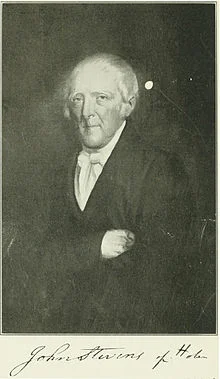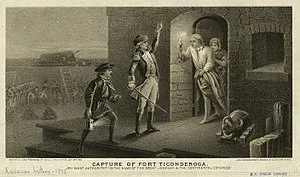John Stevens III – The Thomas Edison of the American Revolution
John Stevens III was a Revolutionary, businessman and inventor in the early Founding Period. He played a role in the political, economic and transportation foundations of the United States.
Stevens was a part of the 'Steam Wars' (which I just made up) when a number of inventors were all in a race to patent their versions of the steam engine. I will get more involved with that in future articles about Robert Fulton and John Fitch.
Revolutionary
John Stevens was a young lawyer when the American Revolution broke out. He served in the Continental Army and attained the rank of Colonel.
Starting in 1776, Stevens served three years as the Treasurer of his home state, New Jersey. In this position he helped keep the State’s finances together while funding the militia, even as the Revolutionary War was fought right there on Jersey soil.
Inventor
Stevens' real impact on the creation of the United States as we know it today began in 1790 when he petitioned the government under the newly ratified constitution to create patent laws. They agreed, and the law was passed in just a few months.
John went about taking advantage of these new laws. Within a year he patented an improved bellows for fanning flames. This would help him in his metal shop where he became interested in the new invention of steam power.
Steamboats
Stevens spent the 1790’s working on creating a steamboat. During this time, he received his first patent. He was fortunate to have passed the earlier patent laws, as three other men had also created steamboats. They all received patents, however, because the mechanics of their vehicles were substantially different.
As early as Thomas Jefferson’s presidency, Stevens demonstrated his ship, Phoenix, which was able to sail on the ocean. John took the then-dangerous voyage from his home in Hoboken to Philadelphia.
Furthermore, Stevens began operating the first steam powered ferry. He ran this from Hoboken to New York City. The thousands of people who commute daily to Manhattan for work today via boat, bridge or train (or helicopter for that matter) can trace their daily routine back to this operation.
Locomotion
After his adventures in steamboating proved successful, John Stevens turned his attention to rail.
Stevens addressed the Erie Canal Commission, recommending that instead of the Canal, New York should build trains instead. The commissioners, who were bent on making the Canal a reality, rejected his ideas.
John went on to secure the rights to any railroads built in New Jersey and eastern Pennsylvania. It would take ten more years but, with his son, he built one of the first steam locomotives in America.
Stevens and his partners began laying the tracks which would play such a pivotal role in building the United States. John was one of the few people with the foresight to understand how beneficial trains could be to the growing country.
Conclusion
It is shocking that the name John Stevens is not more famous in modern America.
His inventions and business sense literally laid the groundwork on which this nation was built. Add to that his time in the Continental Army (and his effect on patent/copywrite law) and you have one of the most underappreciated Founding Fathers.
The main source for this article was John Stevens' section in the National Cyclopedia for American Biography Volume 11, his article can be found here.
Stevens does not have a good biography but to learn more about his most enduring company pick up 'The Camden and Amboy Railroad.' It is from 1891 so the language is a bit old timey.
Our June 2018 Book of the Month is 'Plain, Honest Men,' so if you haven't read it yet pick it up now!
All purchases made are through our affiliate Amazon at their standard price.







